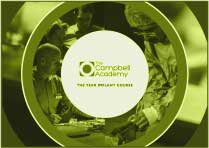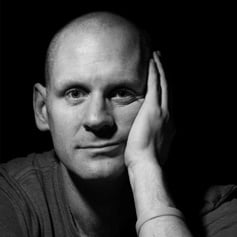Every so often over the past 8 years or so in this blog, I have tried to look into the future.
Because it’s fun and because that’s what I do on a day to day basis for myself.
And so, looking forwards now, personally I’m planning for when I’m 55 (I’m 50 next January) and it would be a good thing to look at dentistry in that way too, if I intend to still be working which I absolutely do.
So, there are two things coming down the track where it seems will loom large in the next 5 years and need to be addressed:
1) Technology
As we exit out of what was a toxic time, with things like compliance and general dental council and all of that stuff, the biggest thing that will shift dental practices over the next 5 years will be technology.
It’s fine to deny it and it’s fine to hold it back but it will seep round and up and over and in and it will not go away.
I remember trying to explain to my then ‘boss’ in Ilkeston in the late 90’s why it would be important to have a computer in the practice (we were running paper appointment books and paper NHS cards).
Later, I would find that he had network cables laid out through the surgery’s from the holes that he’d drilled into the walls himself which were quite easy to trip over.
Now it would be unthinkable to open a dental practice without a computer and although that’s more than 20 years ago, the pace of change doubles every two years as we know.
5 years from now will seem like 50 years from now to some people in dentistry.
At that stage there will be no practice that does not have an intraoral scanner or the ones that do will be on their knees.
It’s not necessarily because they’re more accurate, it’s because they’re better.
I would estimate that our 3Shape scanners get immeasurably better with software updates every 3 months and that pace of change will double every 2 years, to the point where the quality of the scanning will be getting better on a weekly basis.
Obviously after that it will fail to get much better because it will be impossible to get any better but the technology that we will use in diagnosis and in assistance with diagnosis and reporting will get better and better again.
We will likely be printing aligners in our practices left, right and centre, our own surgical guides, models and diagnostic wax-ups for patients to view.
Clinical photography will have moved on again and CBCT will be at a lower dose than periapical radiography and that will cause a whole load of problems with ethics.
The next thing though will be the structure of business and how that will work in dentistry and that’s the second thing next to tech as far as I can see.
Someone shared with me a post of a judgement which had been passed, suggesting that associates should be self-employed and that practices would be responsible for their vicarious liability.
I’m not sure whether it was true or not the post that I was sent but it is certainly the direction of travel.
The tax man will perhaps just about be able to accept someone who comes into your practice once a week or once a fortnight, bringing all of their own kit and not seeing consultations by someone who doesn’t work for you and is a subcontractor but they will not see anyone else as that.
And so, the move to salaried associates will continue and will be formalised by HMRC (in my humble opinion).
This will bring with it a staggering sea change in the financial aspects of dentistry in the UK because (and I’m sure most principles are aware of this) the cost of a salaried dentist is way, way higher than the cost of a self-employed dentist.
Not only do you have to consider PAYE and National Insurance but now there are compulsory pension contributions, holidays, training requirements, sickness, maternity leave and all the rest of those things.
Add that to the fact that salaried associate productivity will reduce significantly on an individual and professional level and it means that dentistry will change out of sight should this come to pass.
HMRC does not care about that and no argument put forwards will change that, when the opportunity arises to declare dental associates as employed. The only problem might be the fact that they might consider trying to take the opportunity to apply that retrospectively and that would be a bombshell.
The only thing that will help in that situation will be numbers and understanding the numbers and being able to explain those numbers clearly to the people who work for you and with you.
The culture of your business will be key too because associates will begin to jump left, right and centre for either what they perceive to be higher paid jobs or to open their own practice so they can effectively remain ‘self-employed’.
All of this means that the budget model for dentistry that we have in many places will simply not stand up to scrutiny and practices who do not have any understanding of how they actually make money will struggle and struggle to survive.
Of course, none of this might come to pass and you might just be able to bumble along in your current situation, not improving or developing and not changing but if you think that this is true, imagine the difference between where we are now and 2016 and double it.
Blog Post Number - 2731





Leave a comment